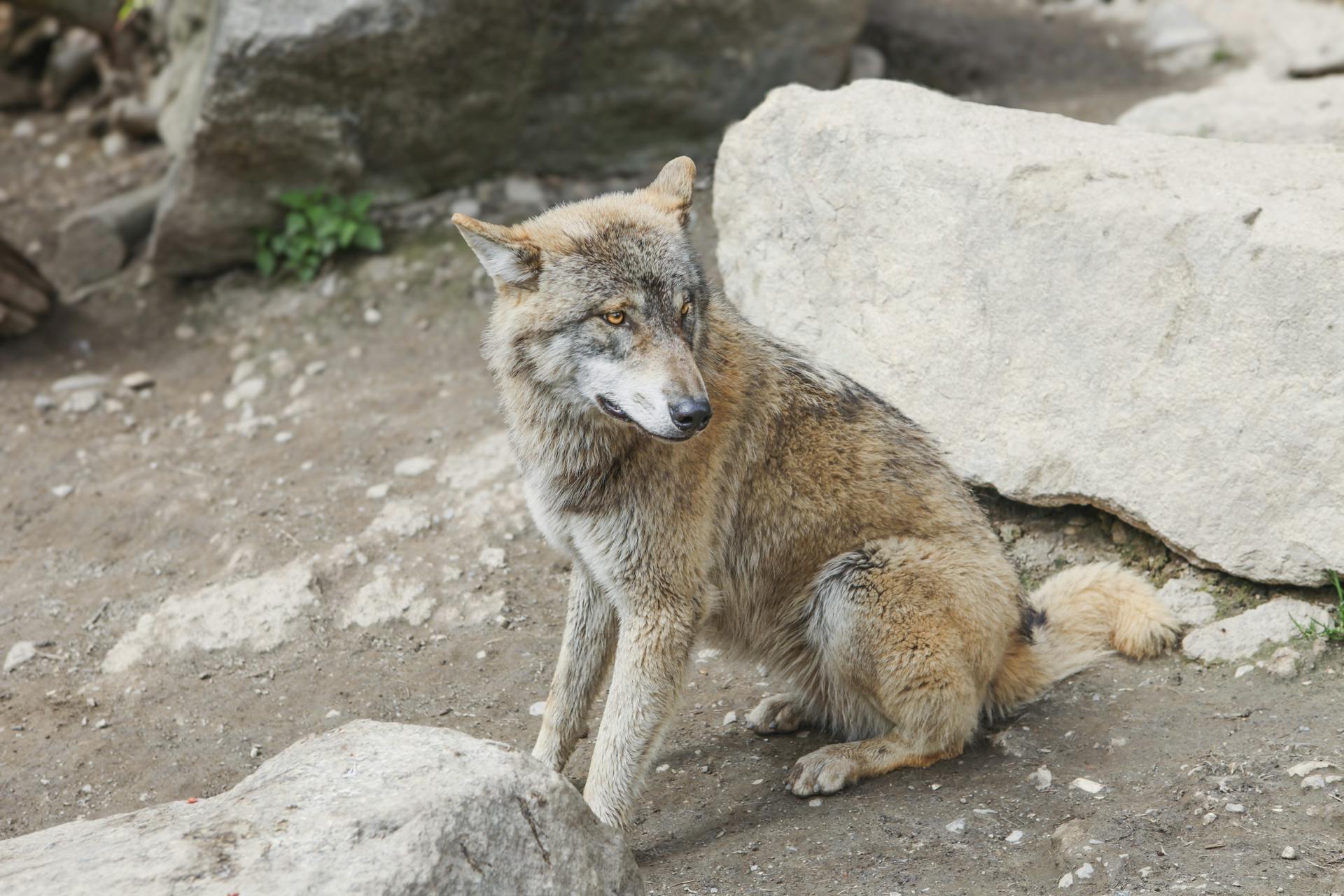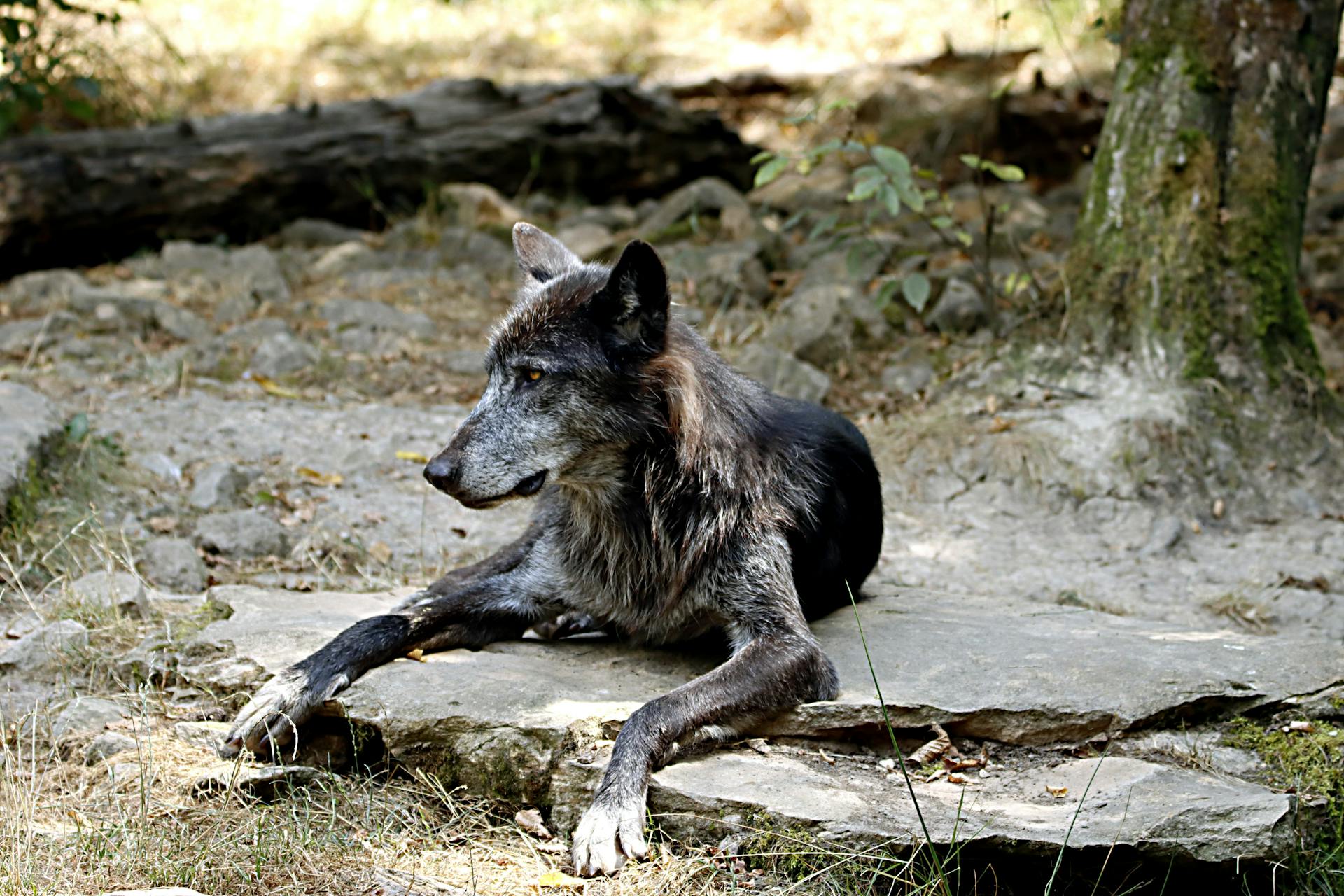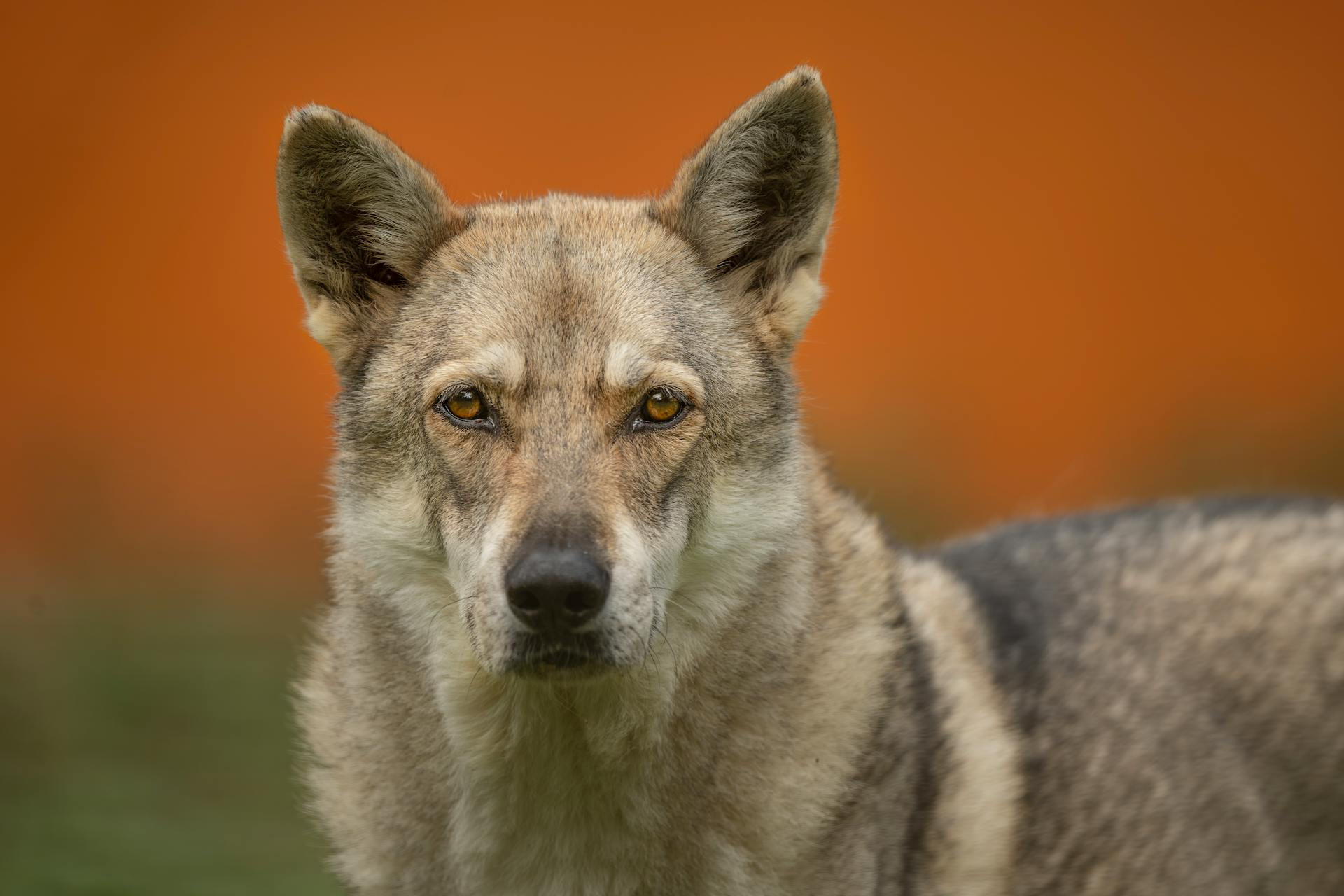
California wolf packs have a rich history that spans over a century. The first recorded sighting of a wolf in California was in 1849, but it's believed that wolves may have been present in the state even earlier.
Wolves were once widespread in California, but by the 1920s, they had been largely eradicated due to hunting and habitat loss. This decline was a result of the state's growing human population and the expansion of agriculture.
Today, California is home to a thriving wolf population, with several packs roaming the state. The Lassen Pack, for example, was the first confirmed wolf pack in California since the 1920s.
Wolf History
Wolves were once present in California's Coastal Range from San Diego to Sacramento when Europeans first began exploring and settling these areas.
Historical records from 1750 to 1850 show that wolves were a common sight in this region.
From 1850-1900, wolves were seen in Shasta County and in the central Sierra Nevadas, indicating a wider distribution of wolves within California.
European settlement had a profound impact on the state's landscape, transforming it from wilderness to a land marked by missions, towns, and agricultural development.
Market hunters soon decimated prey populations that would have supported wolves, leading to an era of conflict that contributed to the decline of wolves in California.
This encroachment on wolf habitat, combined with the loss of prey, marked the beginning of the end for wolves in California.
Wolf Conservation
Wolf conservation efforts have made a significant impact in recent decades. By the 1960s, gray wolves in the lower 48 states were limited to northern Minnesota and Isle Royale, Michigan.
Early conservationists like Aldo Leopold and Adolph Murie recognized the importance of wolves in their ecological role. The subsequent environmental movement of the 1960s and 1970s helped increase public support for wolves, leading to their protection under the federal Endangered Species Act in 1973.
Wolf populations have been steadily increasing since their reintroduction into the northern Rockies and Yellowstone National Park in the mid-1990s.
Recommended read: Northern Inuit Wolf Dog
Wolf Decline
Historical records show that wolves were once present in California from San Diego to Sacramento. Wolves were seen in Shasta County and the central Sierra Nevadas from 1850-1900.
European settlement changed the landscape of California, leading to the decline of wolves. Market hunters decimated prey populations that would have supported wolves.
By the middle of the 1920s, wolves in California seemed to have disappeared entirely. One wolf was trapped in San Bernardino County in 1922, and another was trapped in Lassen County in 1924.
The U.S. Forest Service estimated that approximately 50 wolves existed in certain national forests as recently as 1937. However, there was little evidence to suggest that any wolves were actually present.
The occasional trapping of wolves still occurred in California, but it was concluded that these individuals had been released from captivity.
A Bright Future
By the 1960s, the only gray wolves left in the lower 48 states were found in northern Minnesota and Isle Royale, Michigan. Early conservationists such as Aldo Leopold and Adolph Murie sounded the call for wolf conservation.
Their important ecological role wasn't just a theory - it's been proven through the reintroduction of wolves into the northern Rockies and Yellowstone National Park in the mid-1990s. As wolf recovery has progressed, scientists have learned more about the wolf's role in restoring natural ecosystem dynamics.
Almost two decades after the first wolves were brought to Yellowstone, wolf populations have naturally begun to increase out of established and thriving packs. This has led to wolves expanding their range and returning to California on their own in recent years.
The Klamath-Siskiyou and Modoc Plateau regions in northern California and southwestern Oregon could support up to 470 wolves, according to a feasibility study conducted by the Conservation Biology Institute. It's heartening to see conservation efforts and public awareness paving the way for more packs to thrive.
You might enjoy: Wolf Packs of Yellowstone
Wolf Culture
The wolf was deeply ingrained in the culture of many California tribes. There were more than 80 distinct tribal languages spoken in California, most of which had clearly differentiated words for wolf, coyote, fox, and dog.
Each tribe had its own unique representation of the wolf, reflecting their distinct cultural traditions. Some tribes revered the wolf as sacred.
Wolf Journey
Journey, California's first wolf since the 1920's, made a significant impact on the state's wolf population. OR-7, nicknamed "Journey", traveled over 1,000 miles from Oregon into California in search of a mate.
Journey found a mate and started his pack, paving the way for a population of wild wolves in California. He and his mate had five litters between 2014 and 2018.
The Lassen pack, one of the seven known packs in California, is named after the area they inhabit. CA-08M, the original breeding male of the pack, is OR-7's son.
CA-08M had a litter of pups each year from 2017 to 2019, but has not been documented since the 2019 breeding season. A black male wolf has since taken over as the breeding male of the pack.
This new breeding male has sired two litters of pups, one in 2020 with 9 pups and another in 2021 with 6 pups.
Frequently Asked Questions
What is the new wolf pack in Tulare County?
The Yowlumni Pack is a wolf pack discovered in Tulare County, located in the Sequoia National Forest near the Tule River Tribe's reservation and ancestral lands. This pack was identified in the summer of 2022.
Sources
- https://www.theguardian.com/us-news/2023/nov/13/california-wildfire-wolves-ranchers-cattle
- https://www.californiawolfcenter.org/wolves-in-california
- https://biologicaldiversity.org/w/news/press-releases/new-california-packs-named-as-wolves-continue-to-flourish-2024-01-30/
- https://biologicaldiversity.org/w/news/press-releases/four-new-yet-to-be-named-wolf-packs-confirmed-in-california-2023-08-30/
- https://www.grandviewoutdoors.com/wolf/california-has-a-new-wolf-pack
Featured Images: pexels.com


